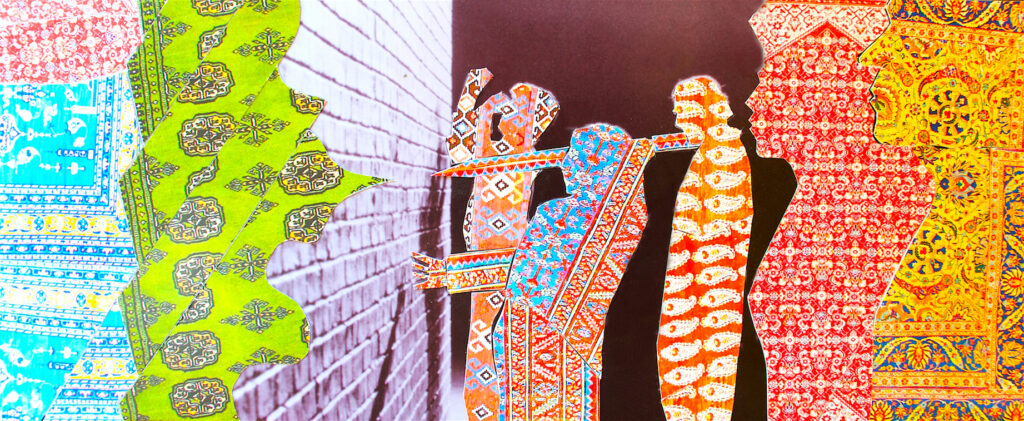Persian Gardens or Persian Windows?
You can experience the paradise-like feeling of the garden when being under the scorching sun for some time. As soon as you cross the gate and pass the garden walls, you will notice the freshness of air, cool temperature under the shade, loving touch of the green and pleasant and gentle sound of water. No wonder Persian Garden represents Paradise (Sabetian, 2021).
The term pairidaēza which comes from Avesta, the holy book of Zoroastrian people, means garden. The same word has traveled through time and place to become the word Paradise in English, Paradies in German and paradis in French (Sabetian, 2021).
In fact this word is tied to the meaning of Garden of Eden and also the highest level of heaven in muslim belief, Firdause; both are gardens irrigated with 4 rivers or one river divided to four. Same description applies to definition of Persian Garden, a surrounded land divided to four sections (Char-bagh) by four aqueducts (Sabetian, 2021).
Gradens and Gardening is an old art in Iranian culture. Gardens have same map as carpets as well as Minakari. Carpets are the gardens at home, where you can see the garden from above.

The purpose of Persian garden was to provide physical and spiritual relaxation. So, it is true to say that it was during the Achaemenid Empire that the idea of an earthly paradise came into reality. Later, the Sassanid created Persian gardens inspired by Zoroastrianism. Gardens are personal heavens that are separated from fruit and vegetable gardens, they are private places for leisure and meeting friends.

Four elements including land, water, plants, and space are the important elements of an Iranian garden. Along with each other, these elements in a mental framework of Iranian architecture form the Iranian garden.
The idea of having gardens reminds me of windows in Iranian culture. There is a strong border separating private and social life. The art of Persian gardening found its way to Europe during the history.
After this introduction of gardening and private life art and culture in Iran, I would like to talk about modern artists that combined this style into their works.
One of these artists is Daniel Mirzapour, who combined “Negargari” (traditional painting) with collages for fashion design. There is an interesting question in his interview with the Tehran Times:
How did you experience your time at L’Ecole Bleu as an Iranian student studying in Paris? How has that influenced your Iranian identity?
I think, the first thing I noticed when I got at L’Ecole Bleue is that the French are not only a head of the time in terms of design, but that they are also very connected to their history and have a great deal of respect for their heritage. So automatically, this aspect of looking back at your culture and renewing it for its continuity resonated with me- naturally inspiring me to do the same with my Iranian background.
Daniel Mirzapour


The second artist that I am inspired by his works is Sassan Behnam Bakhtiar. He created a bridge between Persian and western arts. He already used the patterns of Iranian gardens and life borders into his modern works and demonstrated the borders in contemporary people. Robert Musil mentioned it as a modern human being how lives in towers and love and family and feelings are all mixed in these big modern cities, we leave our own homes to reach our purposes that are planned for a short period of time, however the life is too short. Our happiness is not caused by what we want, but what we achieve. He also used a nice metaphor, what if we were in a train and we could take the train of the monarchy epoch in Austria and travel back home. It is not true that you can define a country with the character of its citizens, because every citizen has at least nine characters, for instance, worker, national, city, class, geography, sexuality, aware, unaware and maybe one privat characteristic. These are smoothly mixed together.
“To describe Sassan Behnam Bakhtiar’s artwork is to describe the country he belongs to and so passionately and justifiably champions: Iran. Multi-layered, complex, thoughtful, deeply historical yet utterly contemporary, colorful, positive, creative, unique. Viewing the world through the prism of Sassan’s carefully crafted compositions gives us a sense of his profound compassion for humanity.”
Janet Rady, Curator and Art Consultant, 2016


Sabetian, F., 2021. Persian Gardens – The Beauty of Traditional Iranian Architecture. [online] SURFIRAN. Available at: <https://surfiran.com/persian-gardens-iranian-architecture/> [Accessed 1 June 2021].
TIMES, T. and TIMES, T., 2021. SASSAN BEHNAM BAKHTIAR – THE ART OF CREATING BRIDGES AND BREAKING THE MOLD – THE TEHRAN TIMES. [online] THE TEHRAN TIMES. Available at: <https://thetehrantimes.com/sassan-behnam-bakhtiar-art-creating-bridges-breaking-mold/> [Accessed 17 June 2021].
Musil, R., 2021. Der Mann ohne Eigenschaften. Chicago: Otbebookpublishing.


